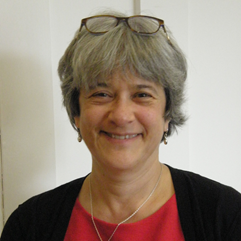SENCo and DSL – How to streamline both workloads

Designated safeguarding leads and SENCos both have demanding and specific roles, says Sara Alston, so how can we help them work together?

- by Sara Alston
- SENCo, author and SEND consultant with 35 years of experience Visit website

We all know that ensuring comprehensive provision for SEND pupils can be a complex process. It is often one that requires multiple team members to coordinate their efforts.
In many schools, for example, there is an overlap between the children that the SENCo and the designated safeguarding lead (DSL) support.
Perhaps surprisingly, for the first time, Keeping Children Safe in Education (KCSIE) 2022 made the importance of these staff working together explicit.
It points out that coordination is vital for effective safeguarding and SEND support.
But what does that look like?
Vulnerable children
We know that those with SEND have an increased vulnerability to safeguarding risks.
There are also some barriers to recognising signs of abuse and neglect in SEND children.
KCSIE explicitly identifies these as:
- assumptions that indicators of possible abuse such as behaviour, mood and injury relate to the child’s condition without further exploration;
- these children being more prone to peer group isolation or bullying (including prejudice-based bullying) than other children;
- the potential for children with SEND or certain medical conditions being disproportionately impacted by behaviours such as bullying, without outwardly showing any signs;
- communication barriers and difficulties in managing or reporting these challenges.
KCSIE added a fifth bullet point about cognitive abilities in 2022:
- cognitive understanding – being unable to understand the difference between fact and fiction in online content and then repeating the content or behaviours. (Paragraph 199)
To be able to safeguard children effectively, we need to understand how these vulnerabilities might impact individual children, and those with SEND as a group.
Therefore, the DSL and SENCo need to share their expertise and knowledge of the children in their school.
There are also specific risks to which children with SEND are particularly vulnerable. These include:
Online safety
Online safety is the responsibility of the DSL.
It is an ongoing concern across most school communities, but we need to identify and understand the additional risks for many children with SEN.
It can be difficult for children to understand the risks with their online behaviour or act on this understanding consistently. This includes possible online radicalisation.
They need additional support through a joint safeguarding and SEN approach.
This will help children build their skills and understanding of the connections between the online and offline worlds. It will also help inform them of what behaviour is safe and appropriate in each setting.
Child-on-child abuse
Children with SEND are also more at risk from child-on-child abuse and bullying than their peers.
This is both as victims and sometimes as perpetrators.
Expert SEN input for incidents that involve these children is important to ensure that we understand any underlying issues around social communications and understanding.
We can then promote an appropriate safeguarding response that fits with the child’s needs.
Working together to safeguard children
The impact of domestic abuse, attachment issues and experiences of ACEs (adverse childhood experiences) can, unfortunately, be easily confused with some indicators of autism.
For example, neglect and other abuse can cause language and developmental needs..
Behaviour and mental health difficulties can also be a communication and indicator of abuse.
Too often our response to these issues is either through a safeguarding or a special needs approach.
However we need an holistic outlook, including an awareness that both may be present.
When the DSL and SENCo work together, they can consider both these views, and keep them supported and on the agenda.
Advocating for children
As KCSIE highlights, it is also more difficult for those with communication difficulties to manage, report or share safeguarding concerns.
Often, we need the expertise and experience of the SENCo to support children’s communications so they can share with responsible adults.
Further, we need to be able to advocate for pupils. Where needed, we may also have to challenge other professionals’ understanding of their needs, difficulties and what is normal for them.
Too often, social workers and others have a limited understanding of special needs and fixed ideas of how to engage with children with specific diagnoses. These may not be appropriate to the individual.
PHSE curriculum
Robust and effective PHSE teaching is fundamental to supporting all children. But, it is particularly important for those with SEN.
Good PSHE teaching enables pupils to identify, respond to and ask for support with safeguarding risks both online and offline.
However, too often a ‘one size fits all’ approach means that the teaching is not accessible for many with SEN.
Worst of all, the demands of the curriculum can mean that intervention groups may take place during less ‘academic’ subjects, such as PHSE. This can mean these children are not even in the room for these non-core lessons.
This needs to be a focus for the DSL and SENCo.
Family support
Many families develop strong relationships with the DSL or SENCo because of the degree of contact with them.
It is important the DSL and SENCo work together so that the messages are consistent.
This also means families don’t have to repeat their story.
We need to be aware of the possible risks and impacts for other family members when there is a child with SEND.
These can include other children in the household becoming young carers.
Furthermore, we need to be aware of the risks of disguised compliance, or everyone thinking that someone else has acted on a concern, thereby unintentionally leaving it unaddressed.
This is only possible through effective joint working.
Both SENCo and DSL can be lonely jobs in school and carry a huge weight of responsibility.
Promoting joint working shares the load, and allows DSLs and SENCOs to see children in a holistic light.
It allows us to consider both safeguarding and SEND needs, without unduly focusing on one to the detriment of the other.
Joint working also provides that all-important listening ear for staff, and gives another point of view for the difficulties and challenges that are part of both roles.
This then enables schools to build a wider picture of children’s needs.
Practical ideas
- Ensure that the DSL is aware of who is on the SEND register and their needs.
Equally, the SENCo should be informed of all safeguarding concerns about children with SEND.
In this way both can contribute evidence, have supportive conversations and are not left having conversations without the appropriate information.
- Establish regular information sharing meetings between the DSL and the SENCo.
- Work together to build chronologies. If you have concerns about a family, but are struggling to reach LA thresholds for support, it is important to consider the whole family and link SEND, attendance, behaviour records, parent interactions and safeguarding concerns to identify the needs effectively.
- Make sure SENCos and DSLs have the ability to share and analyse data together, to identify patterns and plan support.
Sara Alston is an independent consultant and trainer with SEA Inclusion and Safeguarding, and a practising SENCo.










